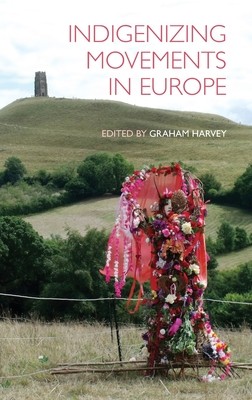
- We will send in 10–14 business days.
- Publisher: Equinox Publishing (UK)
- ISBN-10: 1781797900
- ISBN-13: 9781781797907
- Format: 15.6 x 23.4 x 1.1 cm, hardcover
- Language: English
- SAVE -10% with code: EXTRA
Indigenizing Movements in Europe (e-book) (used book) | bookbook.eu
Reviews
Description
Since the mid-twentieth century, religious movements identifying themselves as Paganism, shamanism, native faiths and others have experimented with two forms of indigeneity. One arises from claims to be reviving or re-presenting previously hidden religious practices from ancestral or pre-Christian times. The other form of indigeneity is found in lessons learnt (directly or indirectly) from Indigenous peoples (especially Native Americans and/or Siberians).The book aims to enhance understanding and enrich debate not only about evolving European movements but also about the concept and practice of Indigeneity, indigenizing and of scholarly practices in relation to such phenomena.Since the mid-twentieth century, religious movements identifying themselves as Paganism, shamanism, native faiths and others have experimented with two forms of indigeneity. One arises from claims to be reviving or re-presenting previously hidden religious practices from ancestral or pre-Christian times. The other form of indigeneity is found in lessons learnt (directly or indirectly) from Indigenous peoples (especially Native Americans and/or Siberians).The book aims to enhance understanding and enrich debate not only about evolving European movements but also about the concept and practice of Indigeneity, indigenizing and of scholarly practices in relation to such phenomena.
EXTRA 10 % discount with code: EXTRA
The promotion ends in 21d.00:16:52
The discount code is valid when purchasing from 10 €. Discounts do not stack.
- Publisher: Equinox Publishing (UK)
- ISBN-10: 1781797900
- ISBN-13: 9781781797907
- Format: 15.6 x 23.4 x 1.1 cm, hardcover
- Language: English English
Since the mid-twentieth century, religious movements identifying themselves as Paganism, shamanism, native faiths and others have experimented with two forms of indigeneity. One arises from claims to be reviving or re-presenting previously hidden religious practices from ancestral or pre-Christian times. The other form of indigeneity is found in lessons learnt (directly or indirectly) from Indigenous peoples (especially Native Americans and/or Siberians).The book aims to enhance understanding and enrich debate not only about evolving European movements but also about the concept and practice of Indigeneity, indigenizing and of scholarly practices in relation to such phenomena.Since the mid-twentieth century, religious movements identifying themselves as Paganism, shamanism, native faiths and others have experimented with two forms of indigeneity. One arises from claims to be reviving or re-presenting previously hidden religious practices from ancestral or pre-Christian times. The other form of indigeneity is found in lessons learnt (directly or indirectly) from Indigenous peoples (especially Native Americans and/or Siberians).The book aims to enhance understanding and enrich debate not only about evolving European movements but also about the concept and practice of Indigeneity, indigenizing and of scholarly practices in relation to such phenomena.


Reviews